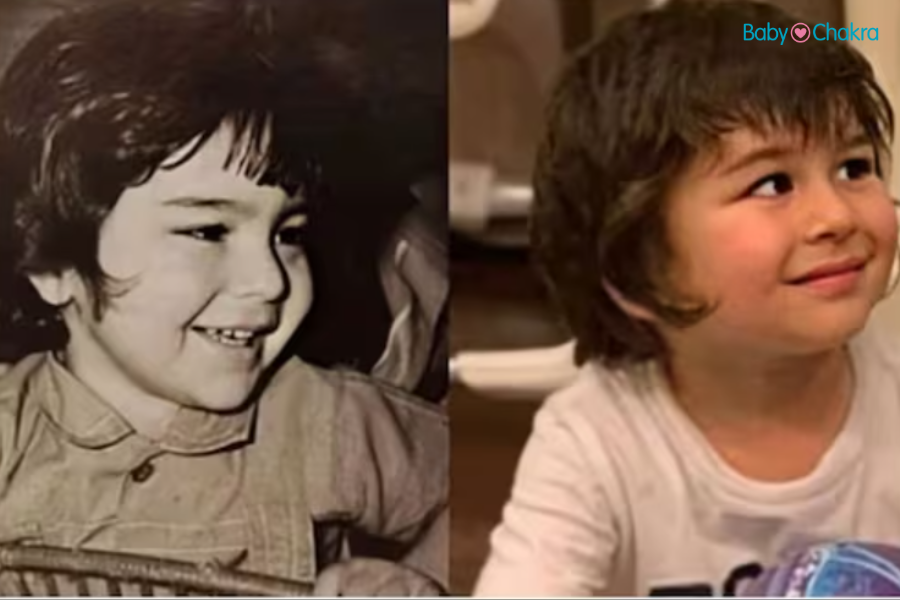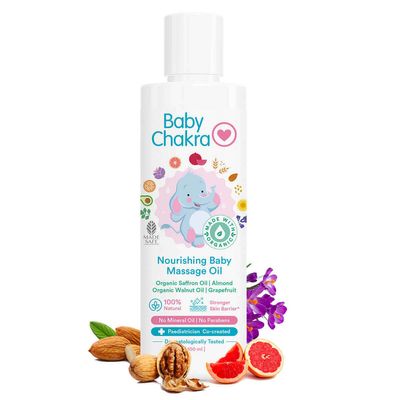
Why Do Kids Look More Like One Parent? The Ultimate Guide to Parental Genetics
6 Apr 2023 | 7 min Read
Manisha Pradhan
Author | 1053 Articles
Actor Saif Ali Khan Pataudi’s sister Saba Pataudi had earlier shared some childhood pictures of him on her social media, and fans could not help comparing how his son Taimur Ali Khan looks exactly like him!
While Saif Ali Khan and Kareena Kapoor Khan’s firstborn, Taimur looks like Saif, their younger son Jeh Ali Khan has an uncanny resemblance to his mum Kareena. Kareena has admitted that too in her book, Kareena Kapoor Khan’s Pregnancy Bible. She said, “Both my babies are so different. Tim looks a lot like Saif. Jeh looks like me. Taimur, however, is outgoing and flamboyant. I noticed that even when he was three months old. Jeh is a lot more intense, quieter.” A fan even shared a comparison picture of Jeh Ali Khan and Kareena Kapoor Khan on Instagram.
Have you too ever looked at a child and thought to yourself, “Wow, they look just like their mom/dad?” It’s a common observation that many people make, and it begs the question: Why do kids tend to resemble one parent more than the other? Is it a matter of genetics, or is there something else at play?
Let’s dive into the world of parental genetics and uncover the secrets behind why kids look the way they do.
The Ultimate Guide to Parental Genetics
To start, let’s talk about genetics. We all inherit half of our DNA from our mother and half from our father, but that doesn’t mean we look exactly like a perfect combination of both parents. Instead, certain traits are dominant over others, meaning they’re more likely to show up in a child’s physical appearance.
For example, let’s say the mum has curly hair and the dad has straight hair. If the gene for curly hair is dominant, the child is more likely to have curly hair than straight hair. If the gene for straight hair is dominant, the child is more likely to have straight hair than curly hair. It’s all about which genes are dominant and which are recessive.
But here’s where things get interesting: not all traits have a dominant and recessive gene. Some traits are co-dominant, which means both genes express themselves equally. A good example of this is blood type. If mum has type A blood and dad has type B blood, their child could have type AB blood, which is a combination of both A and B.
Now, let’s apply this knowledge to physical appearance. Certain physical traits tend to be more dominant than others, such as eye colour, hair colour, and facial features. So, if mum has blue eyes and dad has brown eyes, the child is more likely to have brown eyes, because the gene for brown eyes is dominant over blue eyes.
But that’s not to say the child couldn’t have blue eyes. If both parents carry the recessive gene for blue eyes, there’s a 25% chance the child will inherit it and have blue eyes. It all depends on the combination of genes the child receives from each parent.
If Physical Traits Are Determined By Genetics, Why Do Kids Tend To Look More Like One Parent Than The Other?
There are a few reasons for this.
Chance
First, it could simply be a matter of chance. Each child inherits a random combination of genes from their parents, so it’s possible for one child to inherit more physical traits from the mum while another inherits more from Dad. It’s just luck of the draw.
Dominant physical traits
Second, there are certain physical traits that are more dominant than others, as we mentioned earlier. So, if the mum has a dominant trait like a strong chin or prominent nose, it’s more likely the child will inherit that trait from her. And if the dad has a dominant trait like curly hair or a cleft chin, it’s more likely the child will inherit that trait from him.
Environment and upbringing
Finally, there’s also the matter of environment and upbringing. Even if two siblings inherit the same genes from their parents, they may look different due to differences in diet, exercise, and lifestyle. For example, one child may grow up playing sports and be more muscular, while the other child may prefer reading and be thinner.
So, there you have it: the reasons why kids tend to look more like one parent than the other. But did you know that some physical traits are completely unpredictable and can’t be traced back to either parent?
One example of this is the shape of the earlobe. The gene for earlobe shape is actually not well understood, and it’s not clear whether it’s dominant or recessive. So, even if both parents have attached earlobes, their child could have free earlobes or vice versa.
Another example is the shape of the tongue. Some people have a tongue that’s rolled into a tube shape, while others have a flat tongue. This trait is not well understood either, and two parents with different tongue shapes can have a child with a completely different shape.
And then there are the more quirky traits, like the ability to roll your tongue or wiggle your ears. These traits are controlled by a single gene, and whether or not you have them depends on whether you inherit the dominant or recessive version of the gene.
Can Personality Traits Be Inherited From Parents As Well?
The answer is yes and no. Research has shown that certain personality traits, like extraversion(talkativeness, sociability, and outgoingness) and neuroticism(low emotional stability)are partly inherited.
However, besides genes, the environment also plays a big role in shaping a child’s personality. So, even if two parents have the same personality traits, their child may end up with a completely different personality based on their upbringing and life experiences.
In conclusion, the reason why kids tend to look more like one parent than the other is a complex interplay between genetics and environment. While certain physical traits are more dominant than others, differences in upbringing can also shape a child’s appearance and personality.
So, the next time you’re marvelling at a child’s resemblance to their parent, remember that it’s not always a straightforward matter of genetics. And who knows, maybe that child will grow up to inherit some of their other parent’s unique traits and become a one-of-a-kind individual.
In the end, we are all a combination of our parents’ genes, but we are also so much more than that. We are the product of our environment, our upbringing, and our life experiences. So, embrace your child’s quirks and unique traits, because each child is special in their own way.
Try these natural products that suit babies with all skin types:
Also Read:
13 Tips On Creating A Safe Environment When A Baby Starts Crawling
8 Products That Help To Prevent Mosquito Bites In Kids
Cover image source: Instagram
A


Related Topics for you
Suggestions offered by doctors on BabyChakra are of advisory nature i.e., for educational and informational purposes only. Content posted on, created for, or compiled by BabyChakra is not intended or designed to replace your doctor's independent judgment about any symptom, condition, or the appropriateness or risks of a procedure or treatment for a given person.


